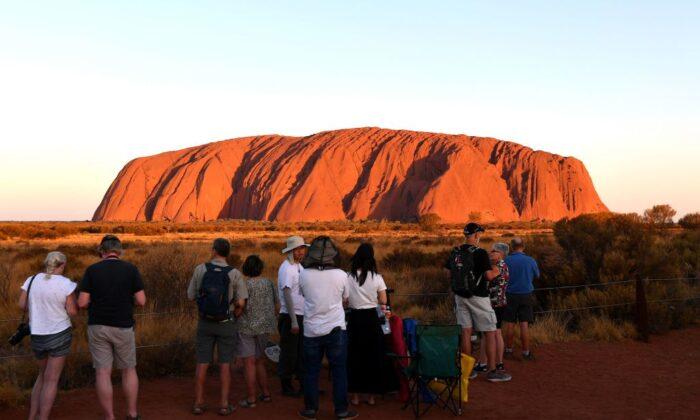The Northern Territory Government has made adjustments to its travel restrictions that may cause tourism to grind to a halt.
Under the “strengthened roadmap” set to take effect on Dec. 20, vaccinated arrivals to the NT will no longer have to undertake a quarantine period but will be required to remain in a high-vaccination zone for the first 14 days of their visit.
This measure is expected to reduce the risk of spreading COVID-19 to remote and vulnerable communities, but according to Tourism Central Australia CEO Danial Rochford, the policy is “tantamount to throwing the industry under a bus.”
“No one will be coming to the Territory,” Rochford told The Epoch Times.
According to Rochford, the new restriction means that visitors to the Territory will have to stay for two weeks in an area with high vaccination rates, Darwin, for example, rather than going directly to a place such as Uluru, Kings Canyon, or Kakadu.
Rochford said that based on the original travel changes set to come in on Dec. 20, there was optimism amongst tour operators. That change would have seen home quarantine lifted for fully vaccinated travellers, meaning they could have entered the Territory and begun their holiday immediately.
“But now the rug has been pulled out from under us,” Rochford said.
He acknowledged that the Government’s intention to protect vulnerable communities is good, but that a balanced approach is needed whereby people are kept safe while the economy is moved forward.
“The new directive is clearly not a balanced approach, ” he said.
Additionally, the duration of this new directive has not been announced by NT authorities leaving the tour operators uncertain of how long they will have to weather the storm.
Another change to the plan is that there will no longer be the issue of coming from a hotspot, as the Territory will stop differentiating between where a traveller came from based on red or green zones. This means that every part of Australia will be treated the same.
Chief Minister Michael Gunner said that “From 20 December the key question on arrival won’t be where you have come from, but whether you’re fully vaccinated or not—that’s what matters.”
“We want to put an end to the on-again-off-again declaration of hot spots, and we want to make sure the rules are super simple so that everyone coming to the Territory knows exactly what is expected from them, while still having key health measures in place,” he said.
In addition, new arrivals to the Territory will need to have three PCR tests. The first is to provide evidence of no COVID-19 within 72 hours prior to their arrival, the second to prove the same within the first 72 hours after arrival, followed by a third test on the sixth day of their visit.
All arrivals will also be given a free rapid antigen test at the airport which they can carry with them to use if they start developing symptoms.
“If you can be vaccinated, but you are not vaccinated – the rule for you does not change. And the rule is simple: stay away,” Minister Gunner said.





